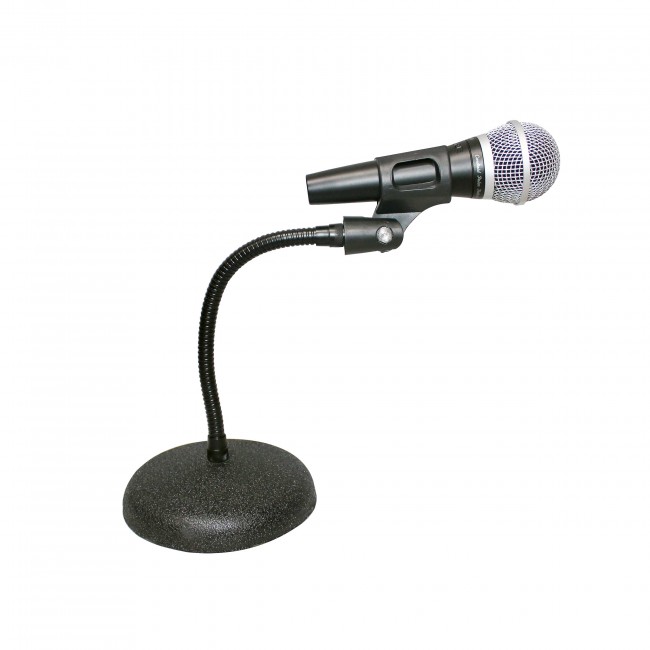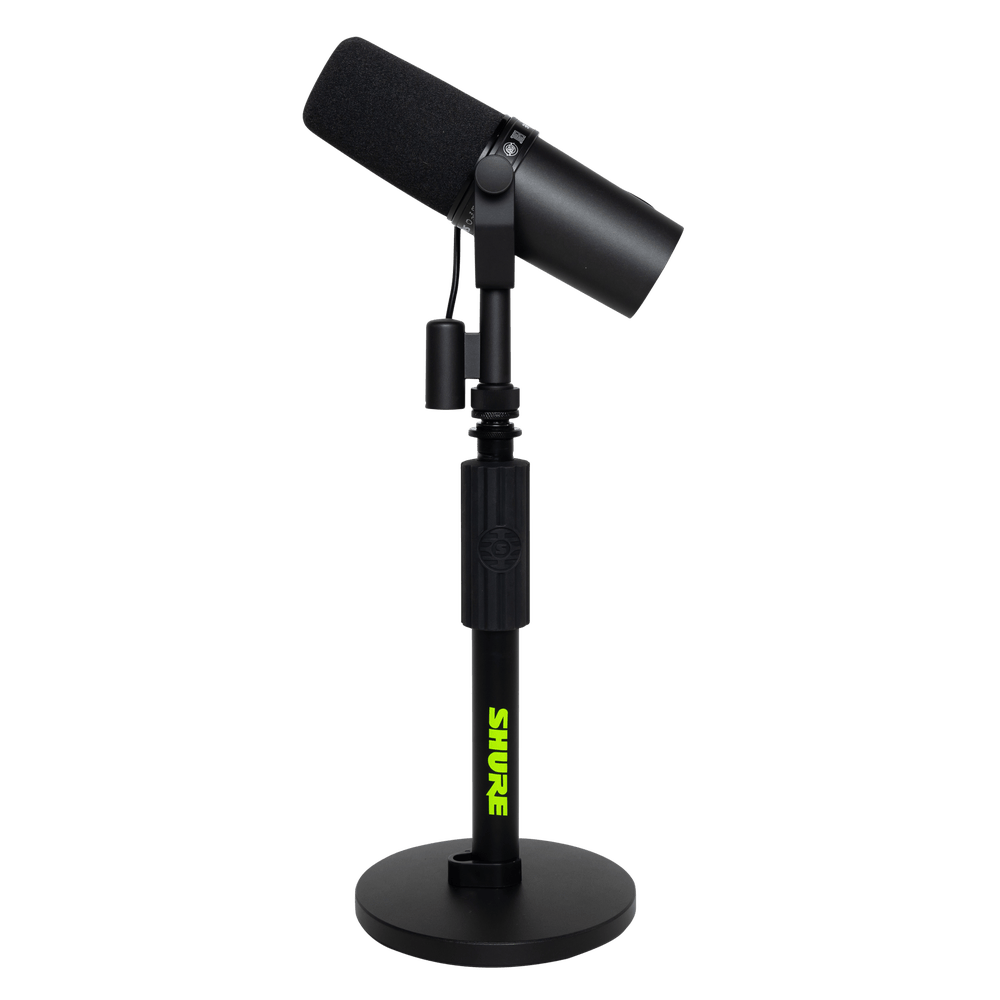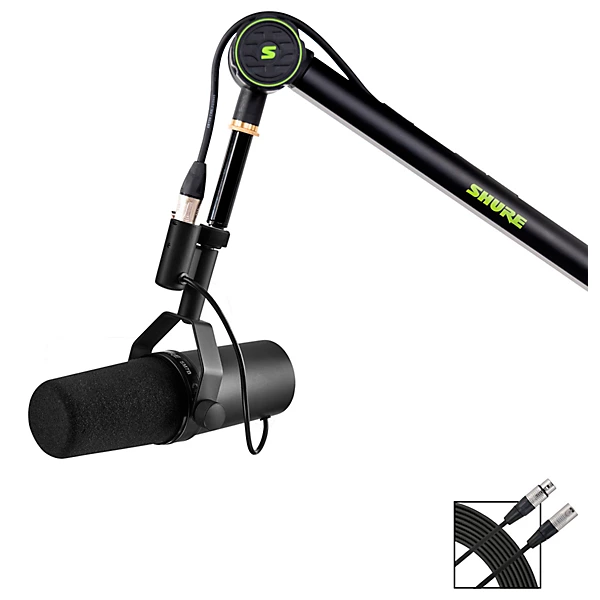Choosing the right desktop mic stand is crucial for optimizing your recording or streaming experience. The right stand not only provides stability but also enhances the quality of your audio. With various options available, making the right choice can be challenging. This guide will help you understand the key factors to consider when selecting the perfect desktop mic stand for your setup.
Assessing Your Needs
Purpose of Use
First, determine how you will use the mic stand. Are you planning to use it for podcasting, streaming, voice-over work, or music recording? Each use case has specific requirements. For example, podcasters and streamers may need a stand that allows for easy adjustments. Musicians may require added stability for heavier microphones. Understanding the primary purpose helps you narrow down your options. Assessing your needs ensures you choose a stand that fits your specific requirements. This step is essential for maximizing functionality and convenience.
Type of Microphone
Consider the type of microphone you will be using. Dynamic, condenser, and ribbon microphones each have different sizes and weights. Some stands are better suited for lighter mics, while others are designed to support heavier models. Check the weight and size specifications of your microphone. Ensuring the stand can support your microphone is crucial for stability and safety. Choosing a stand designed for your mic type ensures optimal performance. Compatibility with your microphone is key to a secure setup.

Types of Mic Stands
Desktop Boom Arms
Desktop boom arms are ideal for setups that require flexibility and range of motion. They are mounted on the edge of a desk and allow for easy positioning. Boom arms are perfect for podcasters and streamers who need to adjust the microphone frequently. They can accommodate a wide range of microphone weights and sizes. The adjustable arm provides versatility for on-the-fly adjustments. Desktop boom arms offer the benefit of keeping the mic out of the way when not in use. They are highly convenient for dynamic work environments.
Low-Profile Stands
Low-profile stands are compact and sit directly on the desk. They are suitable for stationary use and are less intrusive. These stands are great for voice-over work or meetings where the mic stays in one position. They offer a sturdy base and usually include shock mounts for added stability. Low-profile stands provide simplicity and are easy to set up. They are ideal for setups where minimal adjustments are needed. Their compact design saves space and maintains a clean look.
Build Quality and Durability
Material
The material of the mic stand affects its durability and stability. Common materials include metal, plastic, and composite. Metal stands are more robust and offer better stability. Plastic and composite stands are lighter but may not be as durable. Choose a material that balances weight, durability, and stability. Ensuring high build quality extends the lifespan of the stand. Durable materials provide long-term reliability and support. Quality construction is crucial for maintaining a stable setup.
Stability
Stability is essential to prevent the microphone from tipping over. Look for stands with a solid base or those that clamp securely to the desk. Some stands come with anti-slip pads or weighted bases for added stability. Ensuring stability protects your microphone and enhances audio quality. A stable stand reduces vibrations and unwanted noise. Stability is particularly important for heavier microphones. Reliable stability ensures your recorded or streamed audio remains clear and professional.

Adjustability and Flexibility
Height Adjustability
Height adjustability allows you to position the microphone at the optimal level. This feature is crucial for comfort and audio quality. Look for stands with telescoping poles or adjustable arms. Ensuring proper height adjustment enhances your recording or streaming setup. Adjustable height caters to different users and applications. Flexibility in height provides comfort and optimal mic placement. This leads to better audio capture and ease of use.
Rotation and Tilt
Rotation and tilt features allow for more precise positioning of the microphone. Some stands offer 360-degree rotation and multiple tilt angles. These features are useful for achieving the ideal angle for sound capture. Ensuring flexibility in positioning improves audio quality. Rotational and tilt capabilities provide versatile mic placement options. Flexibility in positioning is essential for different recording angles. This ensures optimal sound capture and comfort.

Portability and Ease of Use
Portability
If you plan to use the mic stand in multiple locations, portability is crucial. Look for stands that are lightweight and easy to disassemble. Portable stands are ideal for content creators who record in different settings. Ensuring portability adds convenience and flexibility. Lightweight and easy-to-transport stands are practical for on-the-go use. Portability makes it easier to set up in various environments. This flexibility is valuable for dynamic recording needs.
Ease of Setup
A mic stand should be easy to set up and adjust. Look for designs that require minimal tools and effort to assemble. User-friendly stands save time and reduce frustration. Ensuring ease of setup enhances your overall experience. Easy assembly and adjustments make the stand more convenient to use. Simplified setup means you can focus more on your recording or streaming. Ease of use is crucial for a hassle-free setup and operation.
Special Features
Shock Mounts
Shock mounts are designed to reduce vibrations and handling noise. Some mic stands come with built-in shock mounts or offer them as accessories. They are particularly useful in environments with a lot of movement or noise. Ensuring that the mic stand accommodates a shock mount enhances audio quality. Shock mounts provide better isolation from vibrations. This results in clearer and crisper recordings. Special features like shock mounts add value and functionality.
Pop Filters
Pop filters are necessary for reducing plosive sounds in vocal recordings. Some stands include or support the addition of pop filters. Ensuring compatibility with pop filters improves sound quality. Pop filters are essential for professional-sounding audio. They prevent harsh sounds caused by air hitting the microphone. Special features like pop filters contribute to higher audio quality.
Budget and Brand Reputation
Budget Considerations
Determine your budget before shopping for a mic stand. While it’s tempting to go for the cheapest option, remember that quality often comes at a price. Invest in a stand that offers good build quality and necessary features. Ensuring you stay within your budget while getting quality is important. Budget considerations help balance cost and functionality. A well-chosen investment provides long-term benefits. Quality shouldn’t be sacrificed for the price.
Brand Reputation
Consider the reputation of the brand. Reputable brands often offer better customer support and warranty options. Research customer reviews and ratings to gauge the reliability of the product. Ensuring you choose a reputable brand provides added security. Reliable brands are more likely to offer quality and durability. Brand reputation can be a good indicator of product performance. Trustworthy brands provide peace of mind and support.
Conclusion
Recap of Key Points
Choosing the best desktop mic stand involves several key considerations. Assess your needs and determine the primary use and type of microphone. Understand the types of stands available and their specific benefits. Consider build quality, material, and stability. Evaluate adjustability features like height, rotation, and tilt. Portability and ease of use are important for flexible setups. Look for special features like shock mounts and pop filters that enhance audio quality. Budget and brand reputation are also crucial factors in your decision.
Final Thoughts
Selecting the right desktop mic stand is essential for optimizing your recording or streaming experience. By understanding your needs and evaluating different options, you can make an informed decision. This guide provides comprehensive insights to help you choose the best mic stand for your setup. With the right stand, you can achieve better audio quality, comfort, and convenience. A well-chosen mic stand enhances your overall setup and ensures professional-grade results. Investing in a quality mic stand pays off in performance and durability, making it a valuable addition to your recording or streaming gear.
